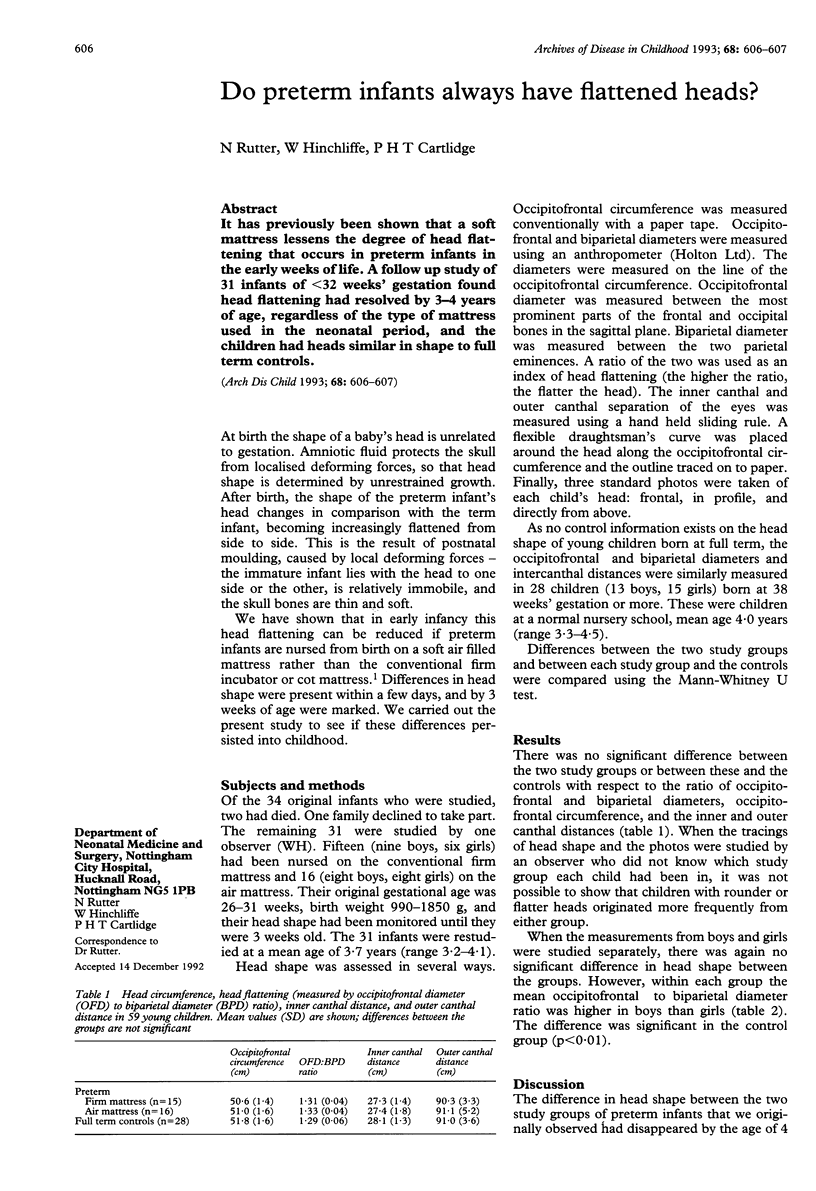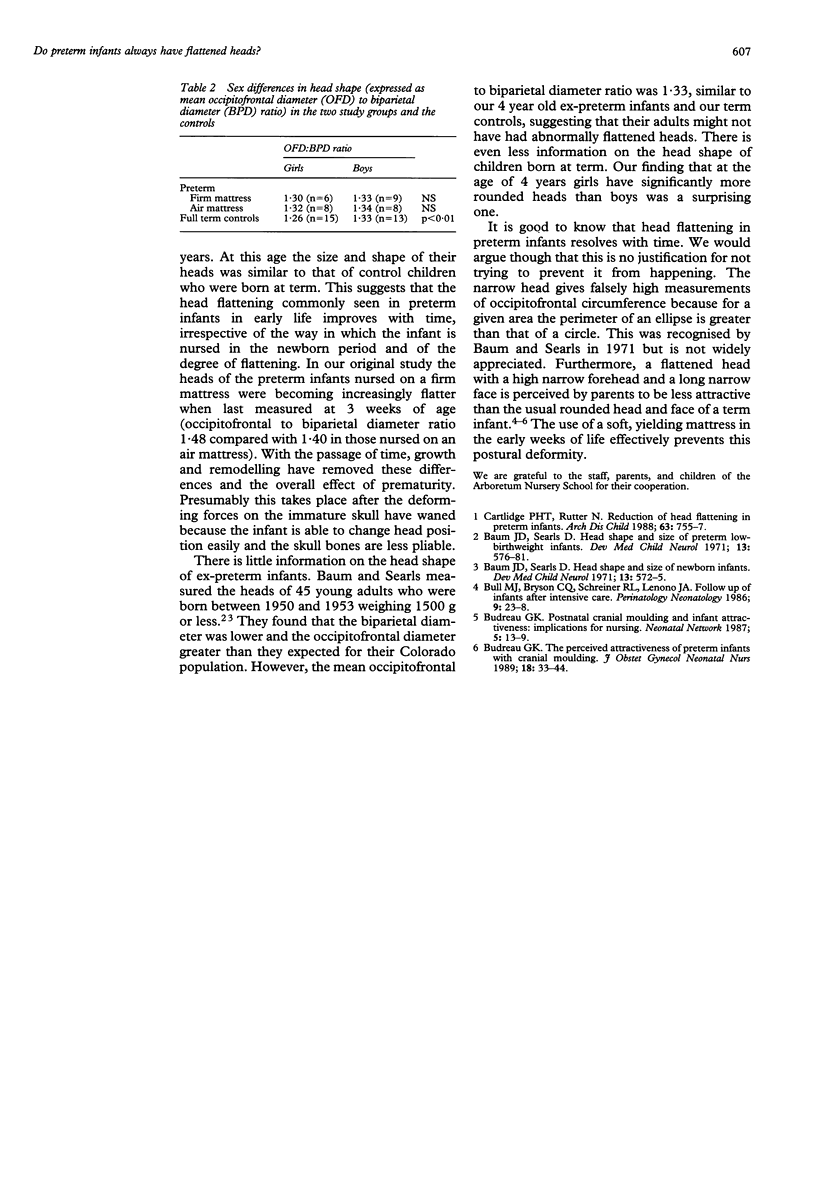Abstract
It has previously been shown that a soft mattress lessens the degree of head flattening that occurs in preterm infants in the early weeks of life. A follow up study of 31 infants of < 32 weeks' gestation found head flattening had resolved by 3-4 years of age, regardless of the type of mattress used in the neonatal period, and the children had heads similar in shape to full term controls.
Full text
PDF

Selected References
These references are in PubMed. This may not be the complete list of references from this article.
- Baum J. D., Searls D. Head shape and size of newborn infants. Dev Med Child Neurol. 1971 Oct;13(5):572–575. doi: 10.1111/j.1469-8749.1971.tb08319.x. [DOI] [PubMed] [Google Scholar]
- Baum J. D., Searls D. Head shape and size of pre-term low-birthweight infants. Dev Med Child Neurol. 1971 Oct;13(5):576–581. doi: 10.1111/j.1469-8749.1971.tb08320.x. [DOI] [PubMed] [Google Scholar]
- Budreau G. K. Postnatal cranial molding and infant attractiveness: implications for nursing. Neonatal Netw. 1987 Apr;5(5):13–19. [PubMed] [Google Scholar]
- Budreau G. The perceived attractiveness of preterm infants with cranial molding. J Obstet Gynecol Neonatal Nurs. 1989 Jan-Feb;18(1):38–44. doi: 10.1111/j.1552-6909.1989.tb01615.x. [DOI] [PubMed] [Google Scholar]
- Cartlidge P. H., Rutter N. Reduction of head flattening in preterm infants. Arch Dis Child. 1988 Jul;63(7 Spec No):755–757. doi: 10.1136/adc.63.7_spec_no.755. [DOI] [PMC free article] [PubMed] [Google Scholar]


